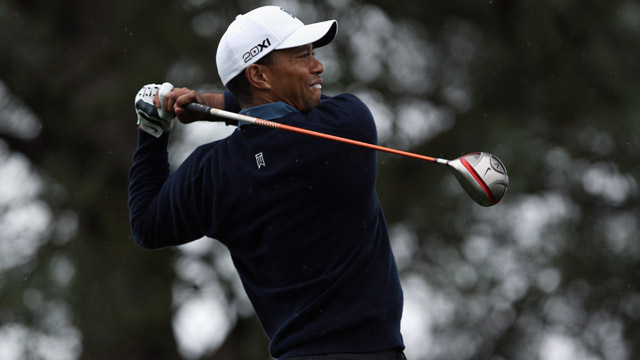NEWS
TV technology, and penalties it leads to, attracts USGA and R&A attention

ATLANTA – Television evidence indicated a possible rules violation. The official talked to the player before he signed his card, and the player was adamant that no violation occurred.
The decision went in favor of the player because the evidence was deemed inconclusive.
This was not Tiger Woods at the BMW Championship.
This was Colin Montgomerie in the Volvo Masters at Valderrama in 2002. Video appeared to show Montgomerie's putter touch the ball before it had stopped rolling after he missed a 5-foot putt on the 10th hole.
He wasn't penalized, and wound up sharing the title with Bernhard Langer when the playoff couldn't continue in darkness.
Why no penalty?
"We went through this involved question-and-answer," European Tour Chief Referee John Paramor said Tuesday. "He said, `I did not touch this ball.' We had no other evidence apart from these two-dimensional TV picture. If it had been shot from another angle, maybe it could have been proved."
Golf and television have come a long way.
Woods was penalized two shots in the BMW Championship despite arguing that his ball only oscillated as he tried to remove a branch in front of it. The video that showed otherwise was taken in high-definition, clear enough to see every dimple.
And this might be golf's next frontier, at least when it comes to the rules.
"Our Rules of Golf committees – the USGA and R&A – are always trying to look forward at what they should address," said Thomas Pagel, the USGA's senior director of rules and competition. "Certainly, HDTV has been on the forefront for the last several years."
Pagel pointed to April 2011 and Decision 33-7/4.5 as "the beginning of the review of HDTV and what impact it has."
The faces on those decisions were Padraig Harrington and Peter Hanson. Harrington was disqualified for an incorrect score when HDTV revealed his ball moved when he was removing his marker on the green. Hanson's violation was a double-hit.
In both cases, the infraction was revealed only through the use of high-def – in Hanson's case, it was played in super-slow motion.
The next edition of the Decisions of Golf is due in January 2014.
"As we continue to have these issues, it's certainly something to consider," Pagel said. "But I don't want to get ahead of myself."
Regarding the players who get far more TV coverage than anyone else, PGA Tour Commissioner Tim Finchem said there was no easy answer.
"We have a lot more cameras on the players who are in contention Sunday," he said. "You've got 70-something players on Sunday. Seven or eight or 10 of them can win the golf tournaments; 85, 90, 95 percent of the camera time is on those seven or eight players."
Finchem doesn't have strong feelings about TV viewers calling in violations. He referred to it as "cumbersome and difficult and awkward" at times, yet interesting to the fans. He said the tour would take a look at prohibiting viewers calling in, though it is not believed to be a high priority.
